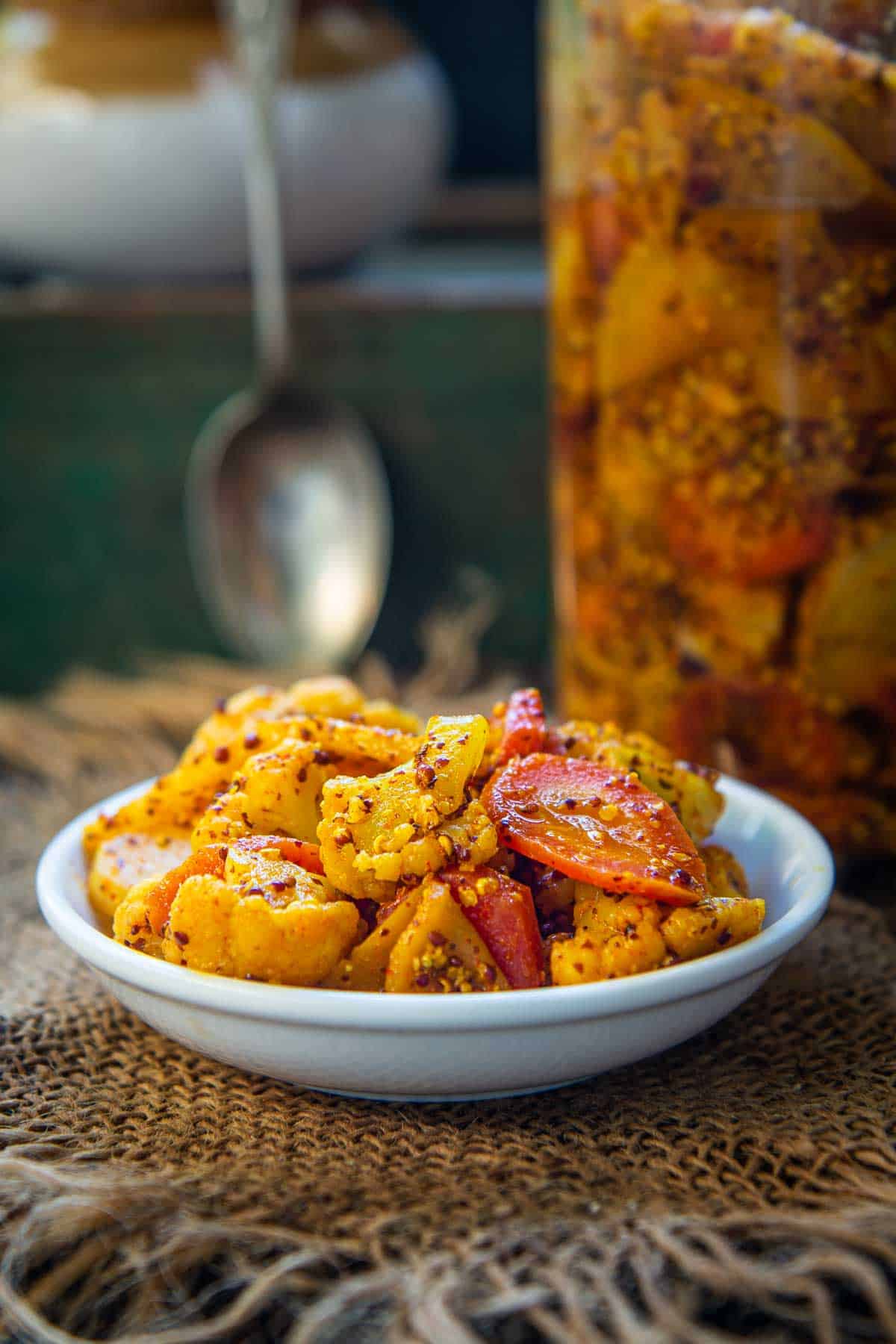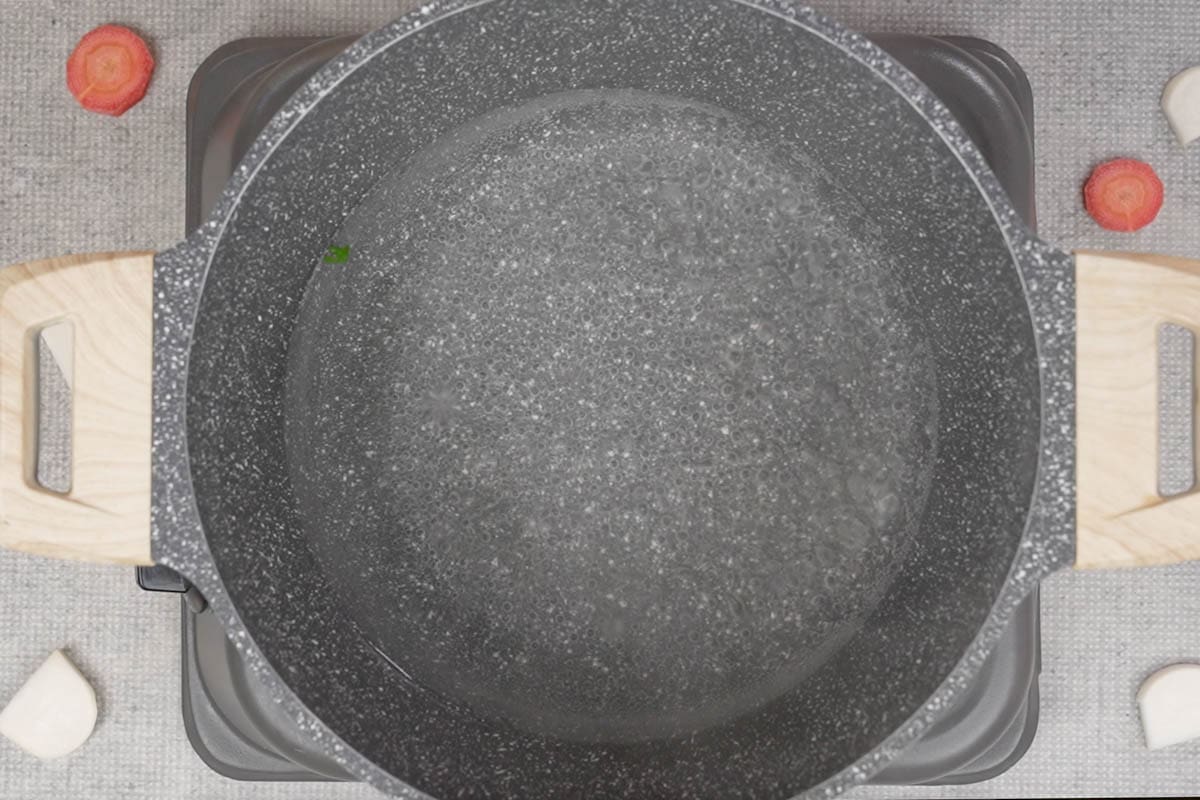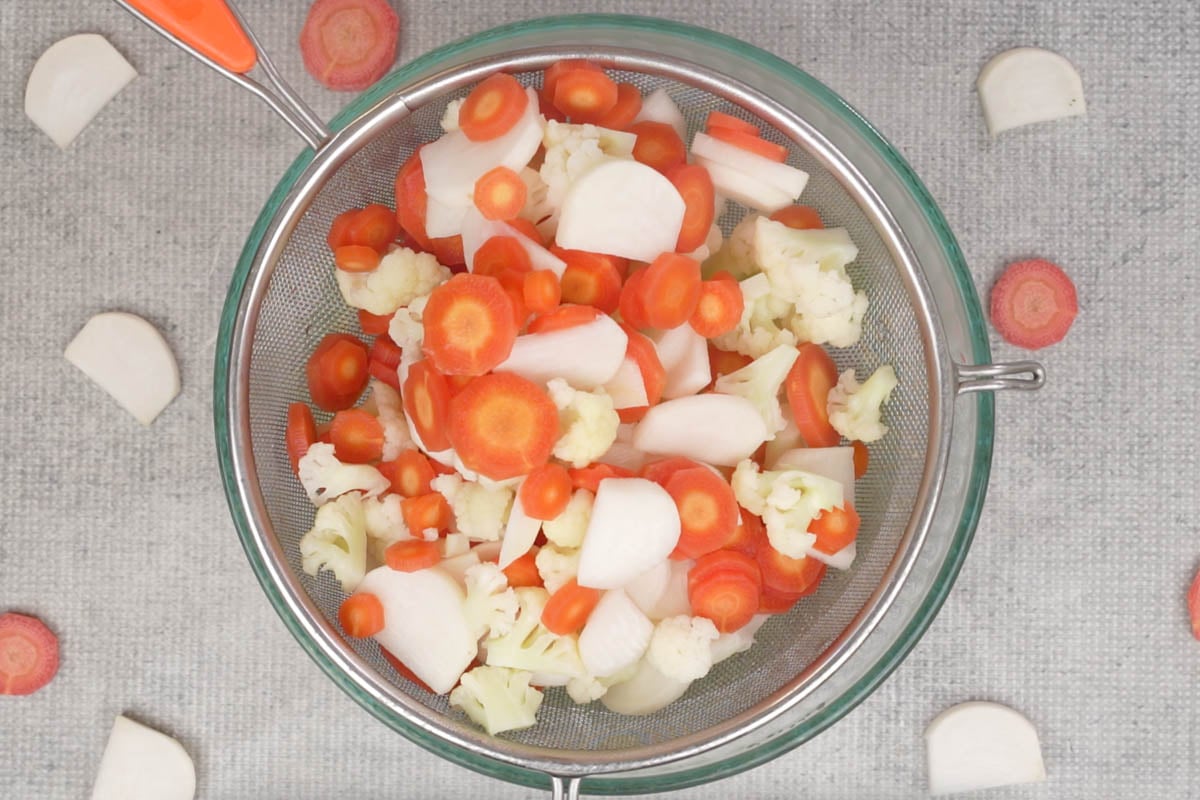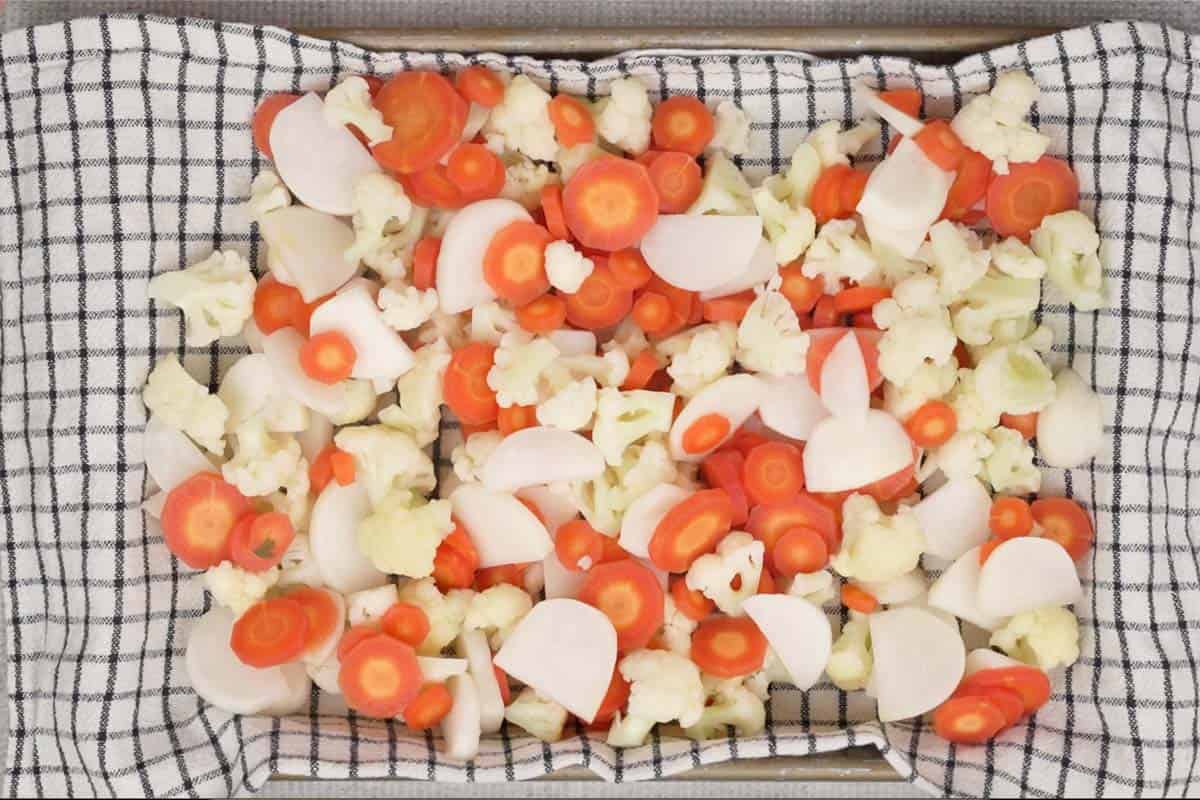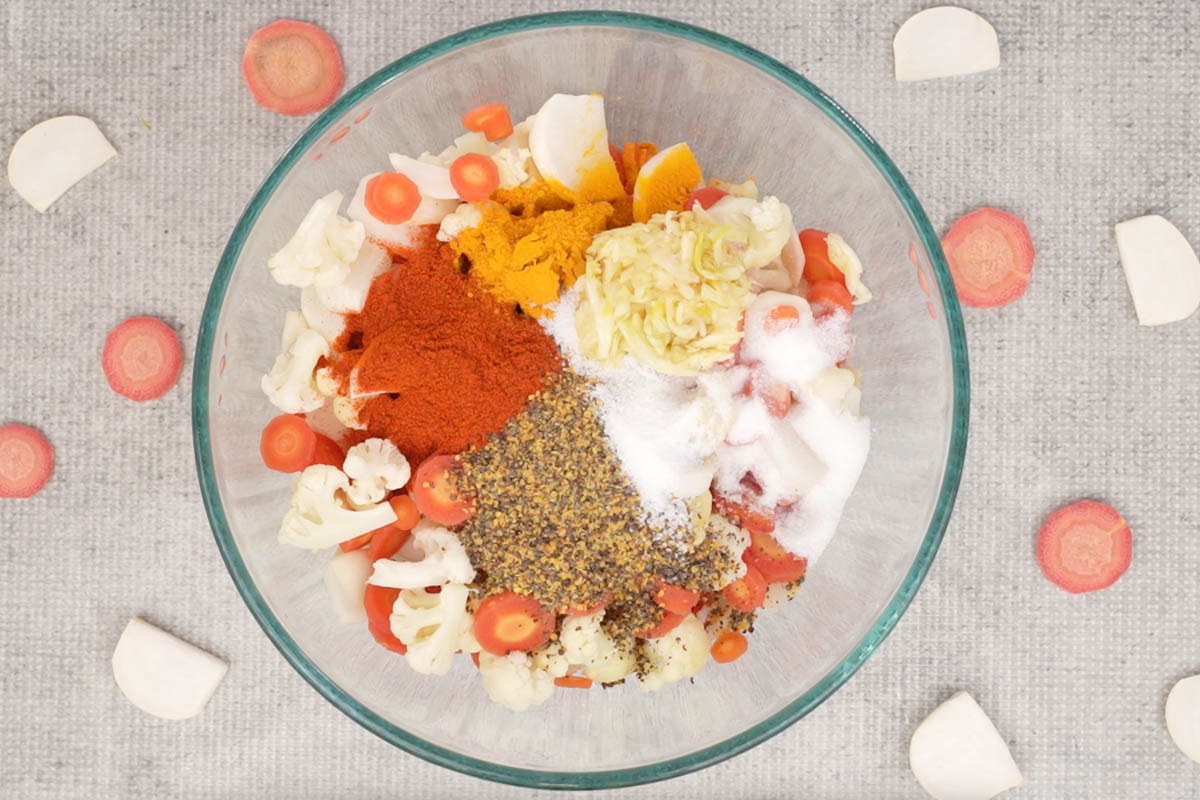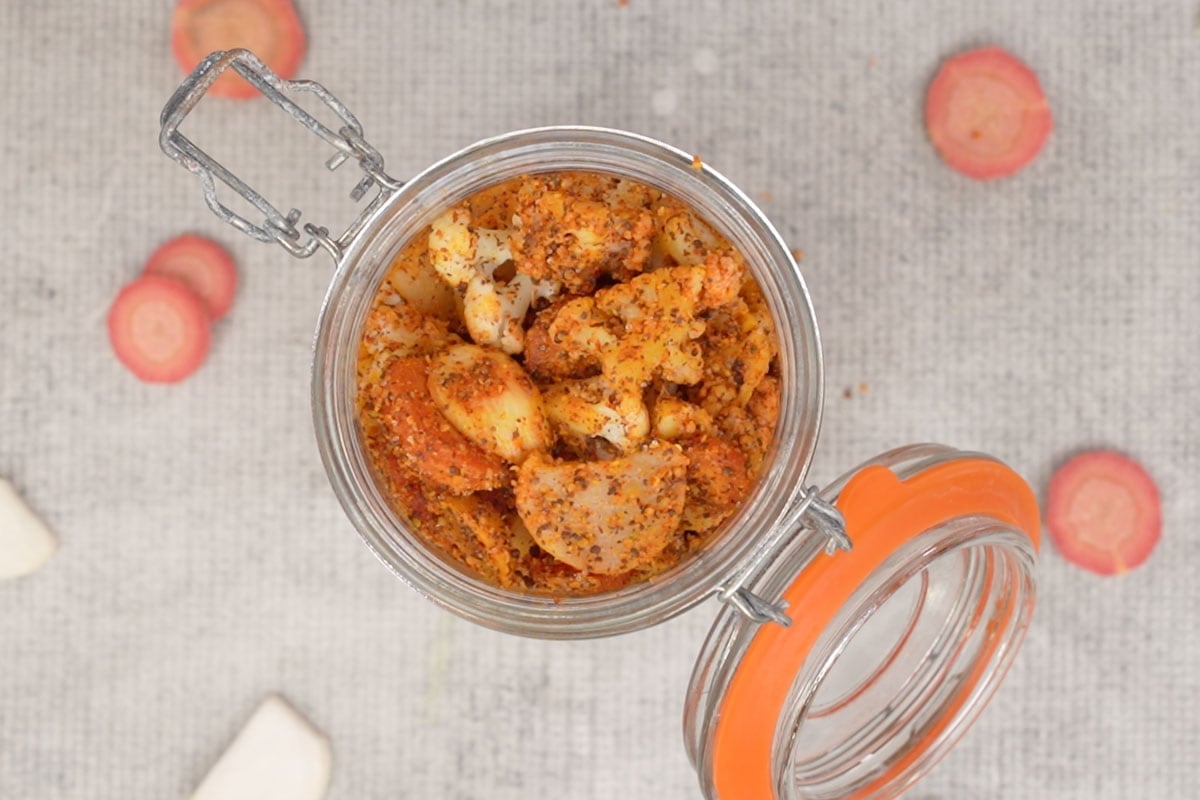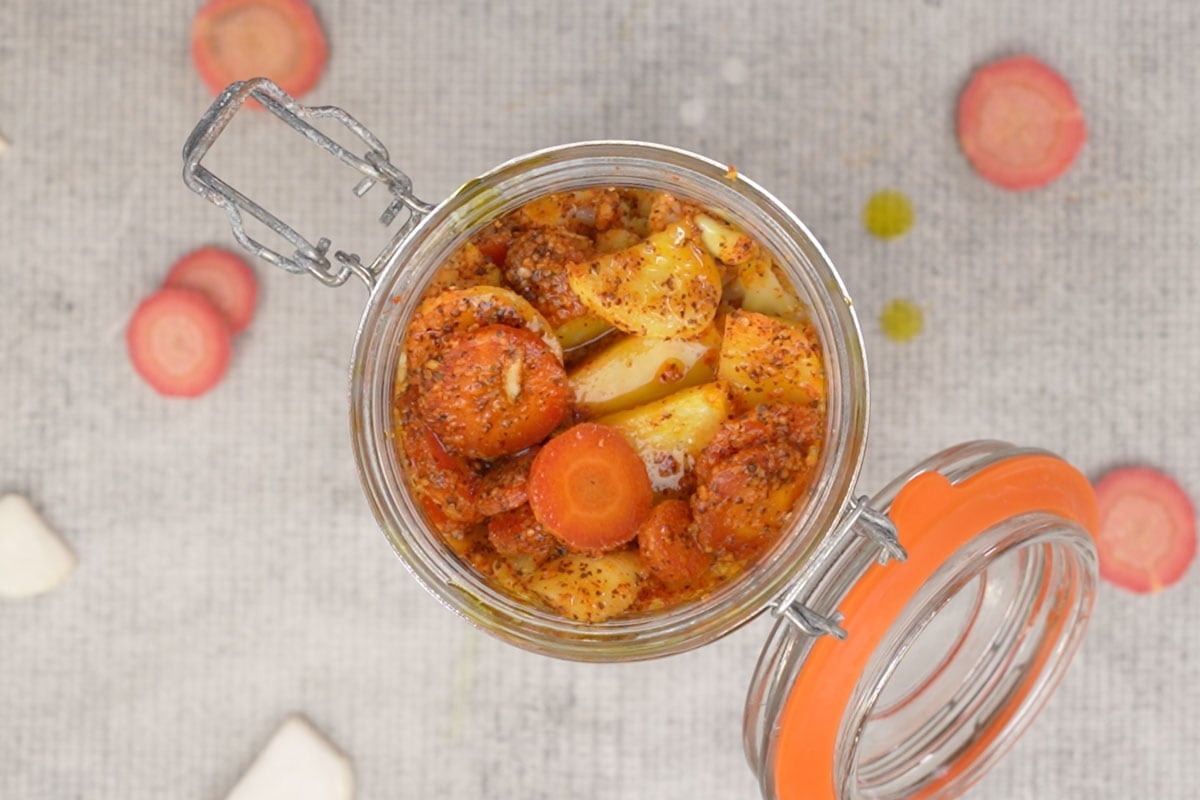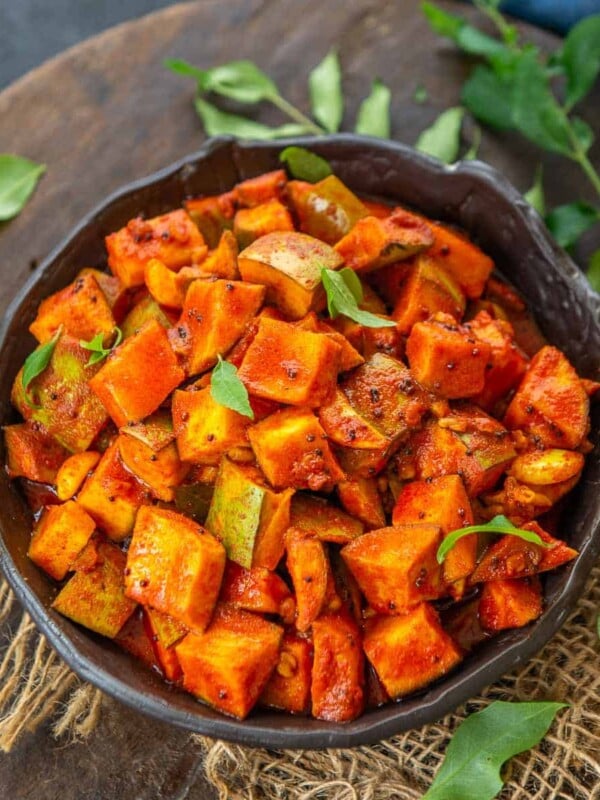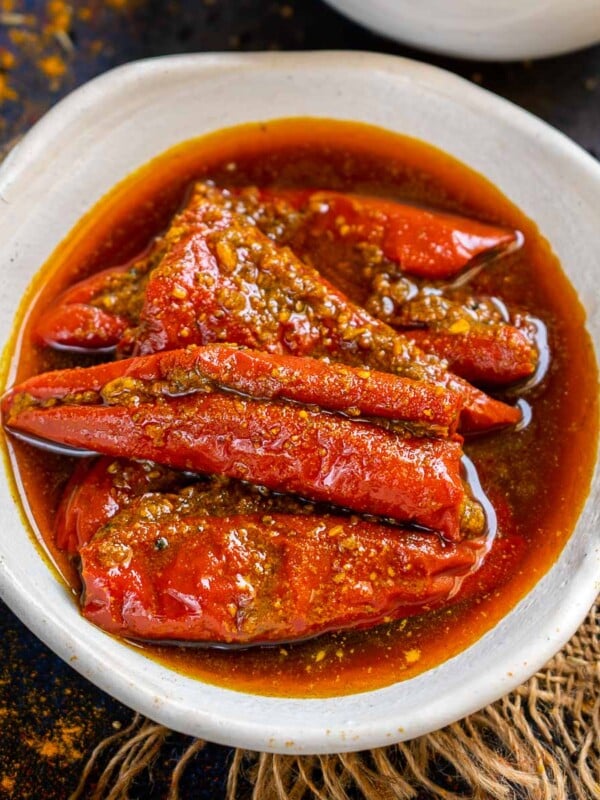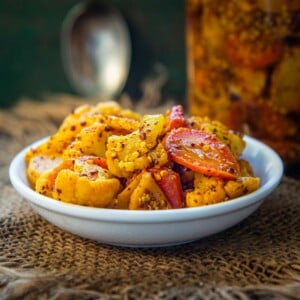on Jan 22, 2024, Updated Oct 15, 2024 I learned to make all the pickle recipes from my mom as I wanted to inherit this lovely art from her. Here are some more of my mom’s Indian pickle recipes which I learned and documented: Starfruit Pickle, Rajasthani Mango Pickle, and Green Chilli Pickle.
About Gajar Gobhi Shalgam Achar
Pickling is a tradition in Indian homes. It is one of the best ways to preserve seasonal vegetables and enjoy them longer. During summers, my mom made mango, lime, and chili pickles and in winter, a batch of this gajar gobhi shalgam achar (mixed vegetable pickle) was inevitably made. Gajar Gobhi Shalgam ka Achar is a delicious North Indian style pickle made with carrots, cauliflower, and turnips. It is a winter specialty, as turnips, red carrots, and cauliflower are only available during this season. She would make this achar at the onset of winter, as soon as the local sabjiwala got them on his stall. No winter meals were complete without this pickle being served along. For the longest time, I did not learn the art of pickling from my mom because she would always make pickles for us. But when I started to blog a few years back, I wanted to document her recipes, and that’s when I finally gave in and learned the recipes from her. Now I am a pickling expert, too, and my mom says my pickles taste better than hers. But that’s how moms are, right? To be honest, if not better than hers, my pickles are fairly good, so give them a try and let me know in the comments how you liked them. Gajar Gobhi Shalgam pickle stays good for 3-4 months. You can serve it with any Indian style meal to perk up its taste. Spices – This recipe needs a few Indian spices like brown mustard seeds, red chili powder, turmeric powder, asafetida (hing), and salt. For a gluten-free pickle recipe, skip adding asafetida. Mustard Oil – North Indian pickles are made using mustard oil as it gives them a unique flavor. No other oil will do justice to the traditional taste but if for any reason, you cannot use mustard oil, then use light olive oil in it’s place.
300 g turnips (peeled, halved, and cut into thin slices) 300 g cauliflower (cut into small florets) 300 g red carrots (peeled and cut into thin slices)
Now drain the water using a mesh strainer and run the vegetables under cold water from the tap to stop anymore cooking from the residual heat. Strain the water well. Spread the strained vegetables on the cloth and let them air dry for 3-4 hours. This step is important to remove any extra moisture from the veggies and increase the pickle’s shelf life.
cooked vegetables 60 g brown mustard seeds, coarsely ground 10 g red chili powder 5 g turmeric powder ½ teaspoon asafetida 60 g salt 20 g garlic cloves (peeled and lightly crushed)
Now pour the cooled mustard oil into the jar over the veggies. You can also use a large ladle to pour the oil from the pan to the jar. Note: Don’t put the lid too tightly for the first 2 days of pickling. Gases are released during pickle fermentation and they need somewhere to escape. If you secure the lid too tightly, there are chances the lid burst open from the pressure from the gases. This pickle is ready to eat in 3-4 days. Store it in a cool and dry place for upto 3-4 months. Always use a clean and dry spoon to take it out to prevent the pickle from spoiling.
Sirka Pyaz (Indian Pickled Vinegar Onions)
Kerala Style Instant Mango Pickle
Bharwa Lal Mirch Ka Achar (Stuffed Red Chilli Pickle)
Avakaya Pachadi (Avakai or Andhra Style Mango Pickle)
